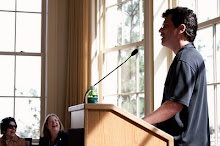By a trail of serendipity (remarkable even for my research trajectory of the past 6 years when I have benefited countless times from being alert to unexpected connections across the breadth of the matrix of discoveries I have amassed), I have just connected some important dots today between Mansfield Park and Jane Austen’s real life.
The trail started with my following up on my learning for the first time a few weeks ago about Vladimir Nabokov as having emulated Mark Twain in pretending to diss Jane Austen’s fiction in a letter to a close Janeite friend:
http://sharpelvessociety.blogspot.com/2010/12/jane-austen-mark-twain-and-vladimir.html
That post attracted the attention of the main Nabokov listserv online, which I quickly joined, and the responses I received there led me to delve more deeply into Nabokov’s enigmatic relationship with JA’s writing.
Today, as part of that followup, I was rereading the long chapter that Nabokov (in his literary critic mode) wrote about Mansfield Park, and noted that Nabokov argues that the date of the Mansfield ball being Thursday December 22, it must be 1808. I quickly checked Ellen Moody’s calendar, and saw that she agreed, and that both Ellen and Nabokov seemed to be in agreement with the consensus of earlier chronologers of the novel.
That’s when serendipity really kicked in. I had just yesterday been reviewing recent posts in Janeites in my email inbox, which I had not focused during the past week, as I had been away on a short trip, and so Ellen Moody’s chronologies for JA’s brothers, posted earlier this week, were very fresh in my mind.
Electricity leapt from one synapse to another in my brain and a new connection was made as I recalled that in real life in December 1808, JA had just started writing in her letters to CEA about their prospective relocation from Southampton to Chawton Cottage, which would take place in the Spring of 1809. And then I recalled my realization from several months ago that Fanny Price’s liberating return to Mansfield Park from her travails in the “desert” of Portsmouth corresponded more or less to the time period of Passover/Easter, 1809.
And finally, I thought about my recent comments, agreed to by Ellen, and echoing comments by at least some other commentators in the past, that the move to Chawton was a crucial watershed in JA’s writing career, and how well that fits with this covert allusion.
And that’s why I claim that JA was being very autobiographical in her covertly aligning the dates of her real life relocation to Chawton House, with the dates of Fanny Price’s fictional relocation back to Mansfield Park.
Without going too deeply into fleshing out all the details of this correspondence between real life and fiction, suffice to say that I see in the graphic descriptions of the squalor of the Price household in Portsmouth a confirmation that JA’s time in Southampton was a very dreary, even despairing, time in her life, feeling trapped in a place she did not want to be, with no reasonable hope of escape—and then, the poignant irony of the sudden death of Elizabeth Knight in October 1808, followed very quickly by the decision by Edward Austen Knight to relocate his sisters and mother to Chawton Cottage.
However, I would like to think that the creepy Mr. Price is _not_ a veiled depiction of Frank Austen, despite their apparent shared predilection for flogging, and also despite the irony that Frank Austen and his first wife would wind up (several years after JA’s death) having ten children, just as the Prices did.
But I do believe that it is _not_ a coincidence that Frank’s second child (and first son), born in July 1809, after JA et al had completed the move to Chawton Cottage, was named “Francis-William”, a name which manages to virtually combine the Christian names of Fanny Price and her favorite (elder) brother, William.
Also, in light of my good friend Linda Walker’s article (which I linked to a few weeks ago, but will do so again now as well) in the most recent Persuasions Online speculating that JA might well have died in 1817 from a rekindling of the typhus infection which nearly killed her at age 7...
http://www.jasna.org/persuasions/on-line/vol31no1/walker.html
...it also occurred to me for the first time today that JA having to spend nearly 4 years in Southampton from 1805-09 could perhaps have been a source of ongoing PTSD for JA, as she lived in proximity to the house where she almost died as a little girl, and, if Linda is correct, the disease which ultimately did take her life 34 years later!
There is much more to this linkage, but you get the general drift.
Cheers, ARNIE
Popular Posts
- Deirdre Le Faye & Me: "I am a scholar, she is a scholar: so far we are equal"
- Darcy's "We neither of us perform to strangers": a Radical New Interpretation
- The Hunger Games’s Veiled Allusion to Shakespeare’s Titus Andronicus
- Rick Santorum would have been the worst person in the world to Jane Austen too!
- August Wayne Booth in Once Upon A Time: Jane Austen Really IS Everywhere in 2012!
- 20 shades of hero/villain Mr. Darcy
- Can Jane Austen forgive Marianne?
- Miss Bennet, Elizabeth, Lizzy, Eliza: who calls her what....and why
- The Great Gadsby: an overnight lesbian feminist ‘comedy’ sensation 10+ years in the making (& 3 millenia overdue)
- Austenland: The Movie was Fun, but the Novel was Better [SPOILER ALERT as to both]
Subscribe to:
Post Comments (Atom)

No comments:
Post a Comment